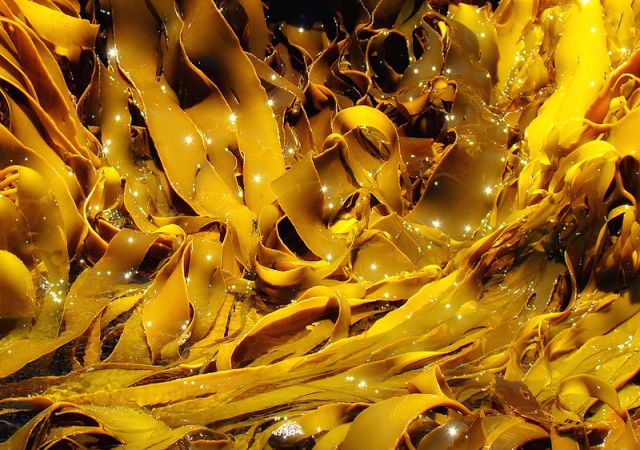 Kelp in Tasmania, Australia. Credit:Bjørn Christian Tørrissen via Wikimedia Commons.Our knowledge of global-warming changes in the ocean is paltry compared to changes on land. Now a new paper in Current Biology reports on alarming shifts in distribution of 52 species of seaweed in Australia during two periods: 1940-1960 and 1990-2009. In the interval between those periods, waters warmed by about 2°C/3.6°F on Australia’s Pacific coast and by about 1°C/1.8°F on the Indian Ocean coast. The authors drew upon more than 20,000 records in Australia’s Virtual Herbarium (a very cool online database), and found that marine algae migrated south towards cooler waters as the ocean warmed—shifting south on the east coast by about 200km/124mi and on the west coast by about 50km/31mi. There’s only so far algae—and all the species dependent on them—can shift before they run of of landmass to anchor to. In an interview with Australian news, lead author Thomas Wernberg says a “back of the envelope type calculation” suggests that 25 percent of Australia’s temperate marine species could be at risk of extinction by 2070.
Kelp in Tasmania, Australia. Credit:Bjørn Christian Tørrissen via Wikimedia Commons.Our knowledge of global-warming changes in the ocean is paltry compared to changes on land. Now a new paper in Current Biology reports on alarming shifts in distribution of 52 species of seaweed in Australia during two periods: 1940-1960 and 1990-2009. In the interval between those periods, waters warmed by about 2°C/3.6°F on Australia’s Pacific coast and by about 1°C/1.8°F on the Indian Ocean coast. The authors drew upon more than 20,000 records in Australia’s Virtual Herbarium (a very cool online database), and found that marine algae migrated south towards cooler waters as the ocean warmed—shifting south on the east coast by about 200km/124mi and on the west coast by about 50km/31mi. There’s only so far algae—and all the species dependent on them—can shift before they run of of landmass to anchor to. In an interview with Australian news, lead author Thomas Wernberg says a “back of the envelope type calculation” suggests that 25 percent of Australia’s temperate marine species could be at risk of extinction by 2070.









